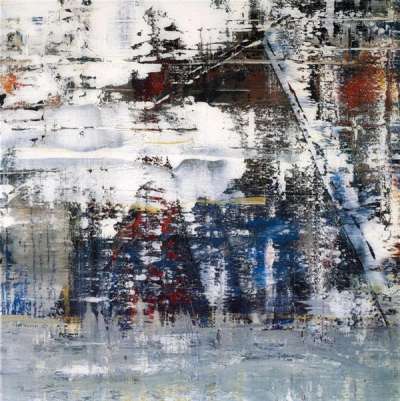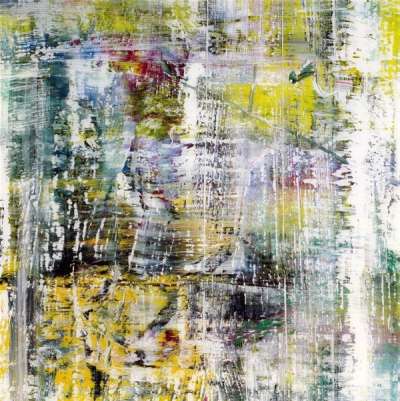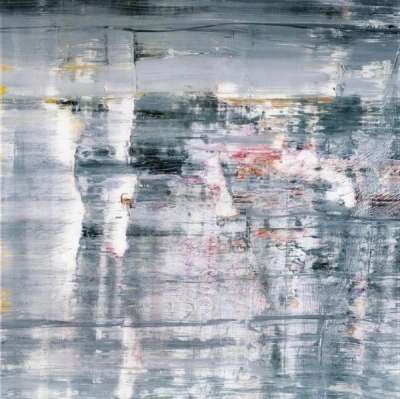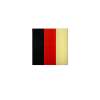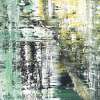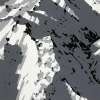Cage
f.ff
In the Cage f.ff series, Gerhard Richter returns to details of his painting cycle, Cage [CR: 897/1-6] (2006). Inspired by the American avant-garde composer John Cage, a figure of deep admiration for Richter, the series highlights the affinity the artist felt between the composer’s atonal, non-musical methodologies and his own deconstructive practice.
Gerhard Richter Cage f.ff For sale
Cage f.ff Market value
Auction Results
| Artwork | Auction Date | Auction House | Return to Seller | Hammer Price | Buyer Paid |
|---|---|---|---|---|---|
 Cage f.ff IV Gerhard Richter Signed Print | 26 Nov 2015 | Van Ham Fine Art Auctions | £68,000 | £80,000 | £120,000 |
 Cage f.ff I Gerhard Richter Signed Print | 26 Nov 2015 | Van Ham Fine Art Auctions | £38,250 | £45,000 | £60,000 |
Sell Your Art
with Us
with Us
Join Our Network of Collectors. Buy, Sell and Track Demand
Meaning & Analysis
Born in Dresden in 1932, Gerhard Richter is one of the most significant German and European visual artists of the contemporary era. Described as both the last painter of modernity and the saviour of ‘modern’ painting, Richter embodies a turning point in the contemporary relation between art, technology, and history. Regarded for his photorealistic paintings, ‘blur’ paintings and Übermalungen – overpainted photographs – Richter first began to explore the representational potential of abstraction in the late 1970s. In this series, entitled Cage f.ff, Richter returns to 6 details of a cycle of abstract paintings named Cage [CR: 897/1-6] (2006). These works were named after the American avant-garde composer John Cage. At the time of the paintings’ production, Richter had been listening at length to Cage’s ground-breaking approach to music-making, identifying many similarities between the composer’s atonal, non-musical methodologies and his own deconstructive approach to the image.
Comprising offset prints made after six photographs of Cage [CR: 897/1-6], Cage f.ff bears all the hallmarks of Richter’s unmistakable visual style. At the centre of the series is Richter’s experimentation with large, home-made ‘squeegees’. Cage I (2015) showcases an assortment of green, blue, and yellow hues, pushed into one another to create a blurring effect reminiscent of Richter’s portraits - many of which are based on Richter's Atlas collection. Cage II (2015) and Cage III (2015) testify to a more gestural approach to abstraction and reference persistent themes of great interest to Richter, such as decay and the the relationship between time and history. Cage IV (2011) possesses a photographic quality which recalls Richter’s earlier use of mixed media as seen in Hood (1996).
To construct these unique abstract works, after which these lithograph prints are made, Richter first paints a canvas with a base layer of colour. As his assistants confirm, to do this Richter restricts himself to using so-called ‘classic’ colours, including titanium white, ivory black, cadmium, ultramarine blue, and lemon yellow. When making his abstract paintings, Richter never uses earth tones. As an art student in the former German Democratic Republic (East Germany), Richter was constrained in a rather different way: certain subjects and methods were strictly off-limits. Commenting on his education at the Dresden Academy, Richter commented on the centrality of ideology to artistic practice: "we weren't able to borrow books that dealt with the period beyond the onset of Impressionism because that was when bourgeois decadence set in." The Cage f.ff series, although produced some 60 years later, testifies to the presence of Richter’s rebellious desire to disrupt and dismantle artistic convention.


